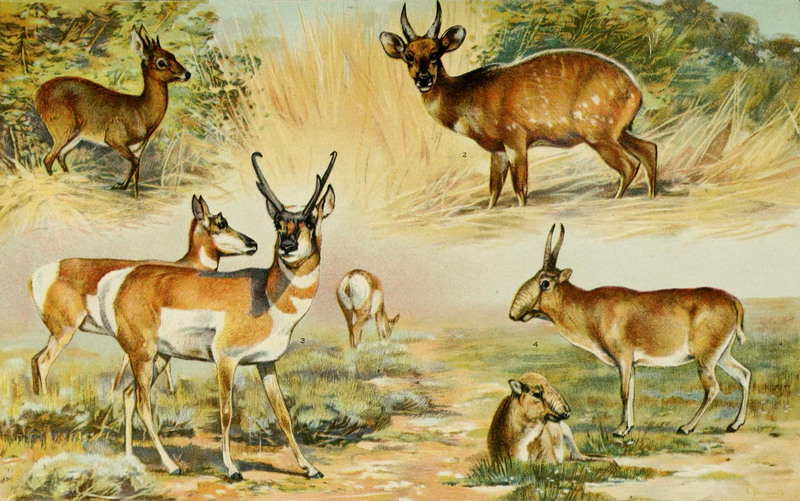common duiker (Sylvicapra grimmia), kéwel (Tragelaphus scriptus), pronghorn antelope (Antilocapra americana), saiga antelope (Saiga tatarica) Description
English: Drawings of four species of antelope.
1. Duikerbok - Cephalophus grimmi = common duiker (Sylvicapra grimmia)
2. Bush Buck - Tragelaphus scriptus = kéwel (Tragelaphus scriptus)
3. Pronghorn - Antilocapra americana = pronghorn antelope (Antilocapra americana)
4. Saiga - Saiga tatarica = saiga antelope (Saiga tatarica)
Date 1902
Source The New International Encyclopædia, v. 1, 1905, facing p. 598.
Author Dodd, Mead and Company; Julius Bien & Co., Lithographers
Source: https://commons.wikimedia.org/wiki/File:NIE_1905_Antelope.jpg
The common duiker, (Sylvicapra grimmia), also known as the grey or bush duiker, is a small antelope found in west, central, east, and southern Africa- essentially everywhere in Africa south of the Sahara, excluding the Horn of Africa and the rainforests of the central and western parts of the continent.
The kéwel (Tragelaphus scriptus) is a small to medium-sized antelope widespread in west and central Africa. Formerly and alongside the imbabala it was generically known as the bushbuck, however, it has since been found to be a species in its own right, with a separate geographic distribution.
The pronghorn (Antilocapra americana) is a species of artiodactyl mammal indigenous to interior western and central North America. Though not an antelope, it is often known colloquially in North America as the American antelope, prong buck, pronghorn antelope, or simply antelope because it closely resembles the true antelopes of the Old World and fills a similar ecological niche due to parallel evolution.
The saiga antelope (Saiga tatarica) is an antelope that originally inhabited a vast area of the Eurasian steppe zone from the foothills of the Carpathian Mountains and Caucasus into Dzungaria and Mongolia. The scientific name of the saiga is Saiga tatarica. It is the sole extant member of its genus and is classified under the family Bovidae.
